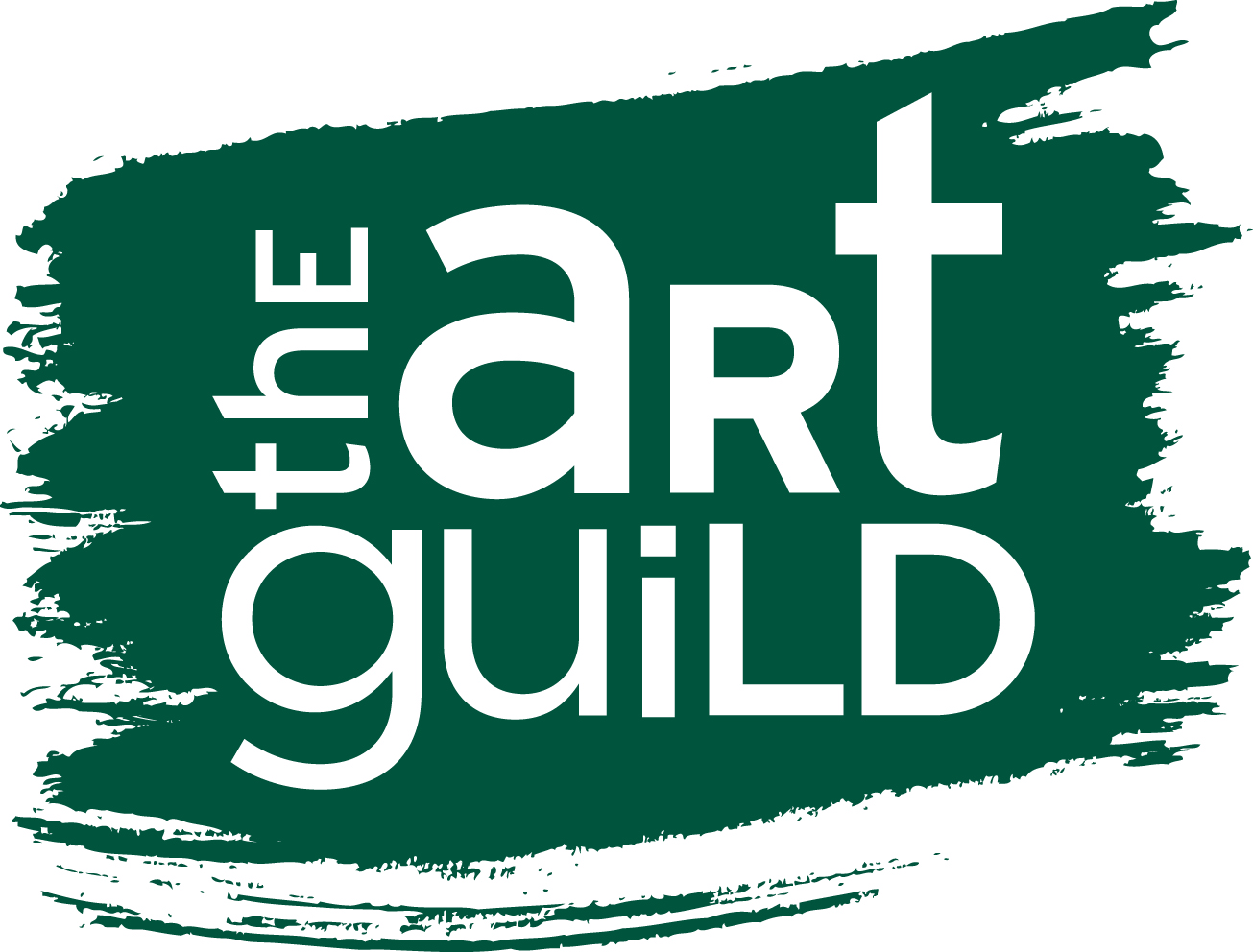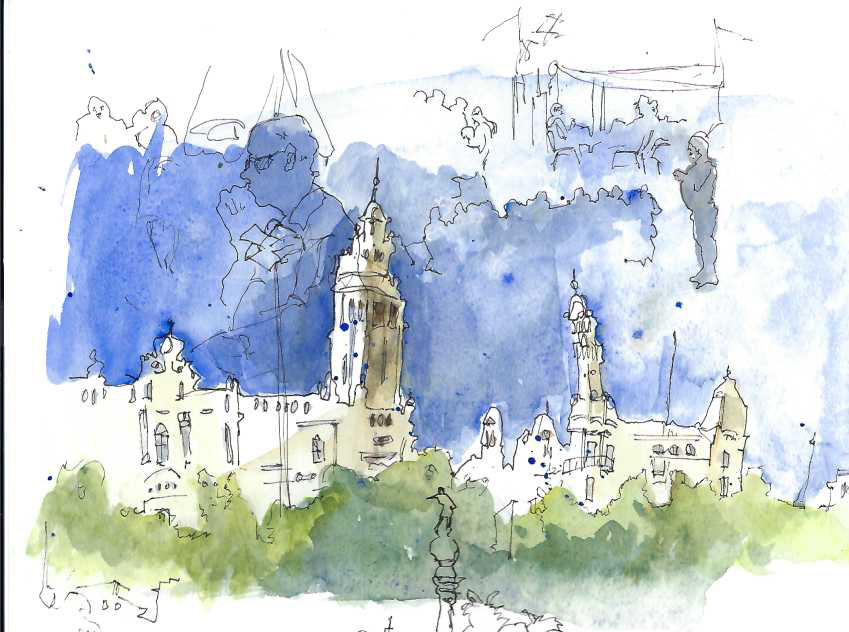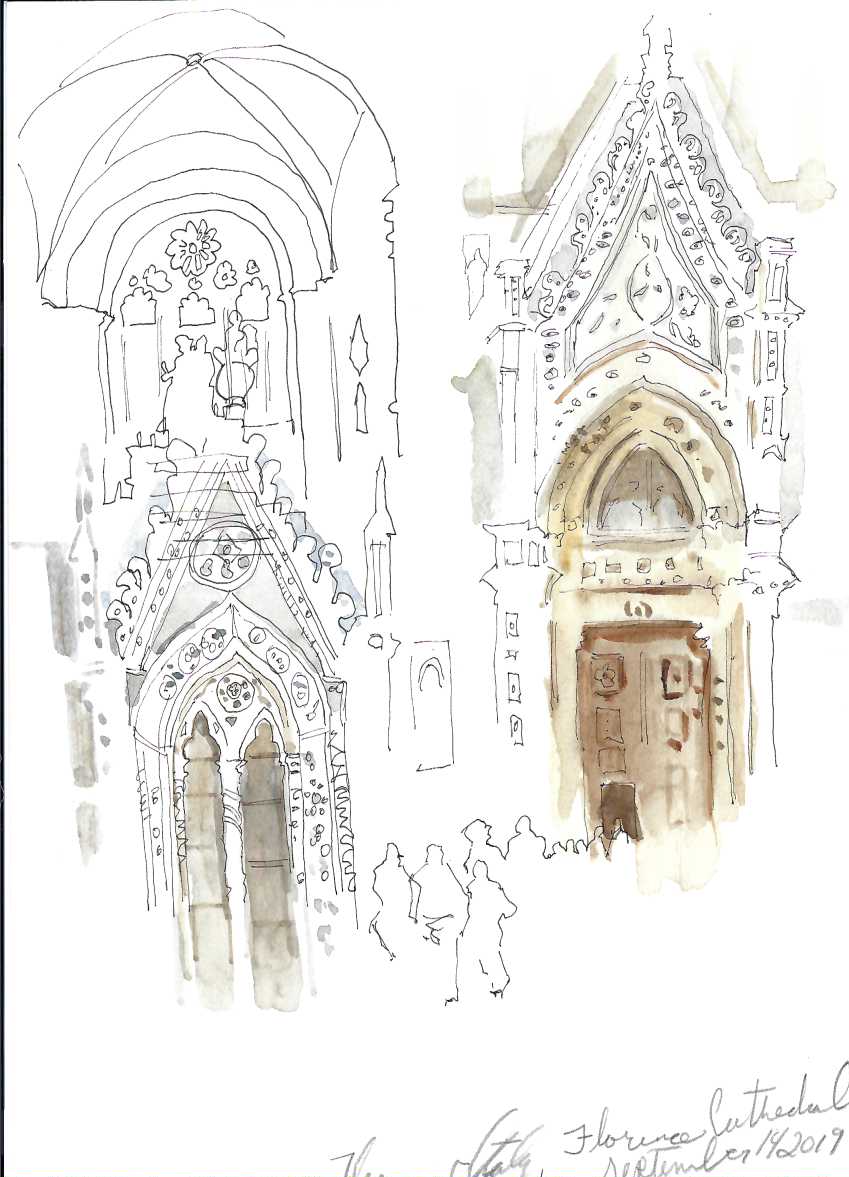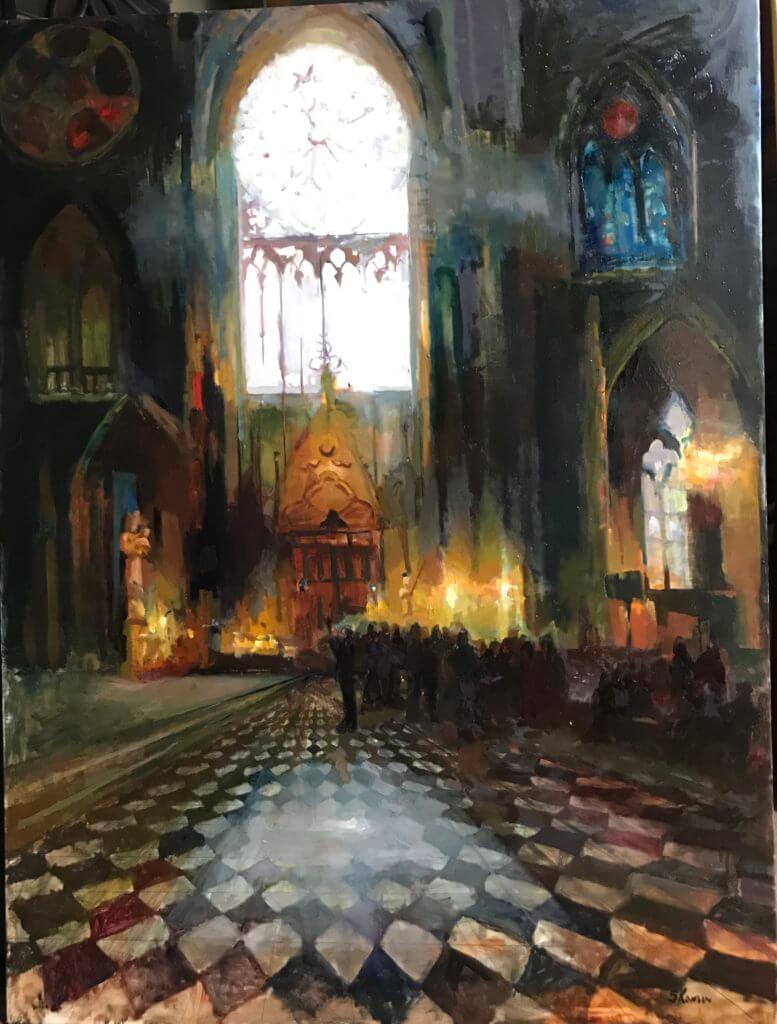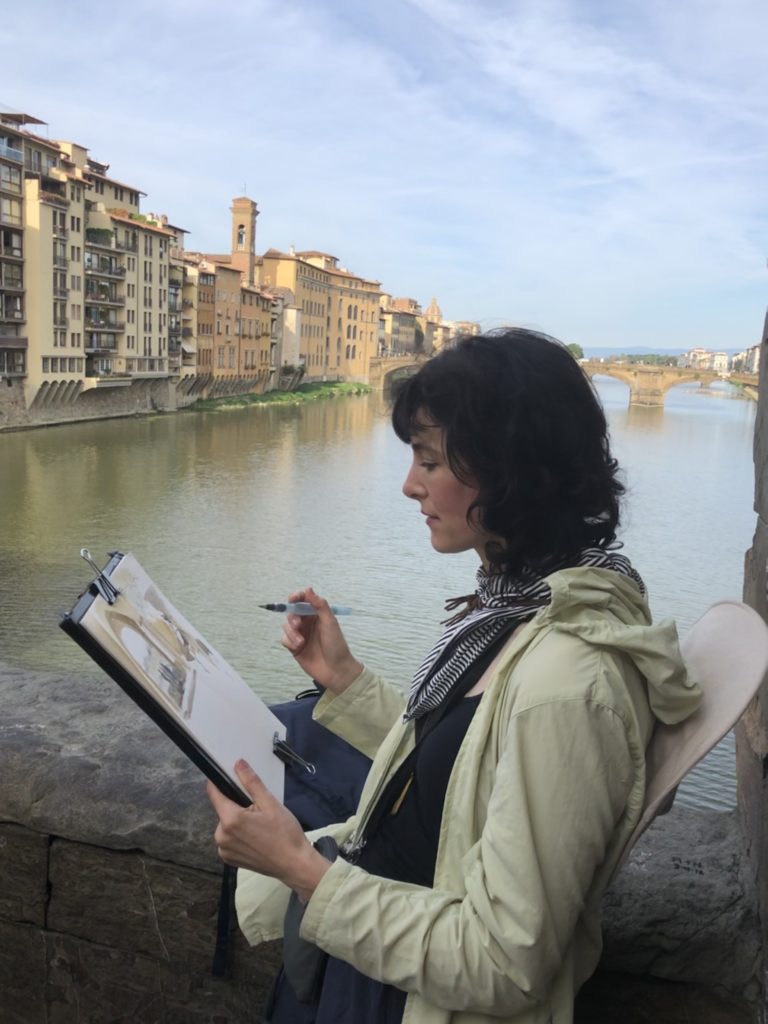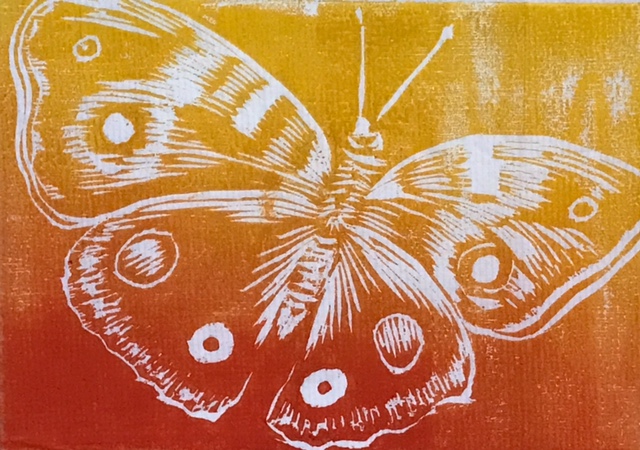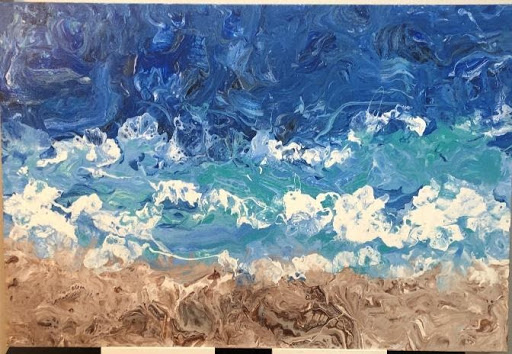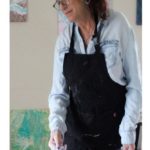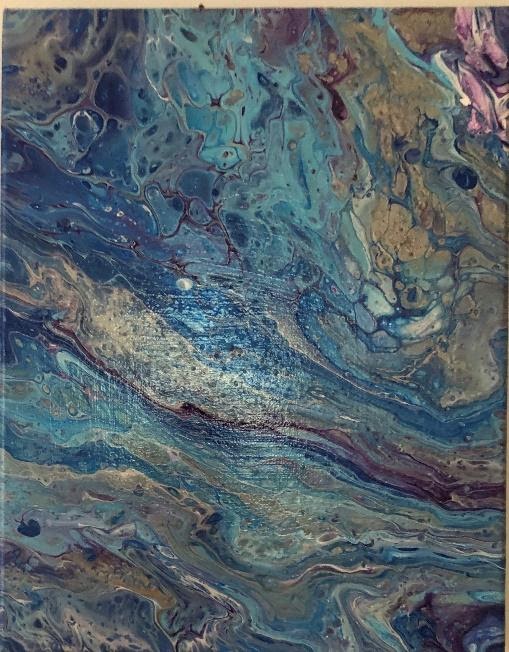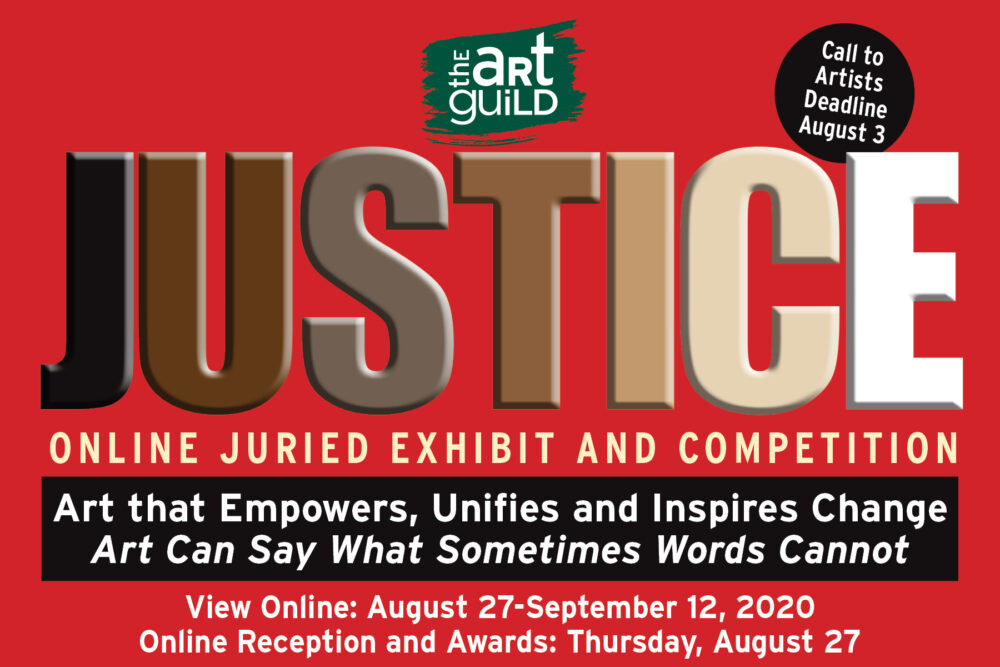
JUSTICE, ONLINE Juried Competition and Exhibition August 27 – September 12, 2020

Call to Artists: JUSTICE, Online Juried Competition and Exhibition
Thank you for your submissions
On view: August 27 – September 12, 2020
Artists Awards & Reception: August 27, 7:30 pm
The Art Guild invites all artists, high school and older, to submit artworks for consideration for “JUSTICE” a Juried Competition and Exhibition. Artwork can say what sometimes words cannot. During these difficult times, we have been inspired to look within ourselves, find ways to “speak out,” and express solidarity and compassion. Show us those emotions and what has empowered and inspired you to address social justice.
CRITERIA All styles from abstract to realism are welcome. All works must be original and have been created in the last five years. References used in the creation of the submitted work must be the artist’s own, or copyright-released for use in this work. The curating committee’s decision is final.
MEDIUMS Including but not limited to photography, acrylic, oil, watercolor, digital art, pastel, mixed media, collage, encaustic, etching/prints, or sculpture. (NO MASTER COPIES OR FAN ART)
JUROR OF AWARDS: Seung Lee is a Korean-American contemporary artist. He is currently Director of Fine Arts and Graduate Studies and a professor at Long Island University, Post Campus. He received a BFA in Drawing from Maryland Institute College of Art in Baltimore, Maryland and an MFA in Painting from Pratt Institute in Brooklyn, New York.
His paintings, drawings, and large-scale installations have been exhibited extensively in the US as well as internationally: China, Italy, France, Japan, and Korea. He has received numerous reviews in the New York Times, Newsday, Kyoto Times, Korea Daily News, Art Word Magazine, Art in Culture Magazine, Art Price Magazine, and Art and People Magazine. He has been featured in “Artist Profiles of Korea and Japan” several times.
Seung Lee has received awards from the New York State Governor, Nassau County Supervisor, Suffolk County Supervisor, New Jersey City Mayor; and in 2011, Seung was awarded as “Best International Korean Artist” from the Korean Art Association. Seung Lee was invited twice to give a lecture at the National Art Educators Association Conference in NYC: “NY Artist Series: Seung Lee”. Seung has been a judge in Decentralization Grants for New York Artists, International Documentary Film Festival, Islip Art Museum’s Cottage House Project, and International Nature Art Biennial, Mill Pond House, and many more.
For more information on Seung Lee, visit www.leeseung.com.
ENTRIES Digital submissions of up to three (3) images via email to artshow@TheArtGuild.org or uploaded to our website, should be between 1MB and 3MB each. To resize or compress your images, go to PICRESIZE.com
Please be aware that the digital images you send should look as good as possible. These will be the images that will be displayed in our online gallery. Try to photograph your image in natural light, be sure that the image is straight and that there is no glare on glass or varnished surface.
For tips on photographing your art, please click here for a tutorial by TAG member Steve Silberstein.
Works previously exhibited at The Art Guild Gallery will not be considered.
Fill out the form below, upload images and pay below. If you have problems with the uploader, please email your images to artshow@TheArtGuild.org – with ALL contact information, image titles and mediums. We will invoice you for payment. Submission will not be included in curating without payment.
Label your images as follows: artist’s lastname_firstname_entrynumber_title.jpg (ex: smith_john_1_beachsunset.jpg). Do not use the # or other symbols in the file name. You MUST change the actual name of the image file. Images CANNOT be named “image.jpg” or “fullrender.jpg” or similar – our database overwrites these images. If you email the images, you must include your name, contact information and the title, medium, value, and size in your email.
ENTRY FEE(S) Registration is required and non-refundable.
- Members: $20 (1-2 pieces) or $30 (an additional piece).
- Non-members: $30 (1-2 pieces) or $40 (an additional piece)
- Student members: $10 (1-2 pieces) or $20 (an additional piece)
- No more than 3 works per artist
FINALISTS The Selection Committee will review all entries and notify each artist as to the acceptance of the submitted work. The Art Guild has the right, in its sole discretion, to choose which eligible entries will be accepted to be exhibited. All decisions are final. Artists whose work has been selected will be notified after August 11, either by email or here on the website.
AWARDS 1st Place $300 • 2nd Place $200 • 3rd Place $100.
LIABILITY & INSURANCE The Liability Waiver on the entry form must be signed by the artist submitting images for consideration. It is the responsibility of the participating artist to insure or self-insure any work submitted for inclusion in this exhibit.
AWARDS
1st Place $300 • 2nd Place $200 • 3rd Place $100
CALENDAR & IMPORTANT DATES
CALENDAR
DEADLINE: August 3 at midnight EST – Application, images and payment must be received.
ACCEPTANCE/REJECTION NOTIFICATION: After August 11
ONLINE EXHIBIT
• August 27 – September 12, 2020
ONLINE, VIRTUAL Artist’s Reception & Awards Ceremony
• Thursday, August 27, 7:30 pm
QUESTIONS & TROUBLESHOOTING
QUESTIONS Call 516-304-5797 or email artshow@TheArtGuild.org with “JOY OF COLOR” in the subject line.
If you have problems with the uploader, please email your images to artshow@TheArtGuild.org – with ALL contact information, image titles and mediums. We will invoice you for payment. Submission will not be included in curating without payment.
Emailed images must include your name, contact information and the title, medium, value, and size in your email.
To resize or compress your images, go to PICRESIZE.com
Please be aware that the digital images you send should look as good as they possibly can. These will be the images that will be displayed in our online gallery. Try to photograph your image in natural light, that the image is straight and that there is no glare on glass or varnished surface.
SELLING YOUR ARTWORK
Artwork may be sold directly by the artist with a suggested donation of 20% of the selling price from the artist to The Art Guild. Note, however, that sales may not be made at the exhibition. All work must remain on view for the duration of the exhibit.
Congratulations to the artists listed below!
Your name and the piece(s) accepted are listed.
Allison Belolan, From This Land…A Little History
Lauren Bourguet, One Nation and Send Her Back
Owen Brown, Saint Roch Cures the Plague with Beasts (COVID Tintoretto)
Kathleen Celestin-Parks, Courage 7053 and Courage Kneels
Susanne Corbelletta, Indivisible with Liberty and Justice for All
Michele Garfield, Untitled
Jimmy Gockel, Change Gonna Come
Heather Heckel, Protest!
Margarita Henriksson, Roman Justice
Susan Herbst, Blackbird Fly
Hsiao-Chu Hsia, False Freedom
Wenchelle Jean*, Dynamic Beauty
Annette Kasle, Liberty at What Price?
Daniel Kasle, Fade
Karen Kirshner, ©Asylum Seekers
Myungja Anna Koh, The Way under Justice
Joan Laufer, Gay Pride
Helen Lesnick, Breonna
Mark Mancher, Working for Justice
E. Craig Marcin, ESSENTIAL
Christopher Martin, Undoing Shame: A Public Display
Maundy Mitchell, Protest Portraits – Trysten and Protest Portraits – Francois
Harold Naideau, Political Woman
Loretta Oberheim, Breonna Taylor
Ann Parry, 17 Minutes, Erica Smegielski, and Interfaith Memorial Service for Haiti
Sophie Raimondo, The Color Blind Revolution and Unity is the Antidote
Jessica Rapaccuiolo, Their Future Matters
Alice Riordan, Pride
Randi Benum Roernes, Best Friends
Kaoru Shibuta, Air
Barbara Silbert, Pillars of Justice
Susan Silkowitz, Say Their Names Valley Stream NY
Barbara Spivak, Supreme Court Justice, School Desegregation and Interracial Marriage and Remembering the Taos Massacre
Joan Stevens, Abstract Justice and Rightfulness
Caitlin Stewart, Hearth Failure
Janet Susin, Black Lives Matter and Only Place to Rest
Manuel Villalobos, Anchor Baby and Anchor Baby in the Third Dimension
Emma Weston*, No More Stolen Sisters and Love Wins?
Angeli Zankel, Blue
